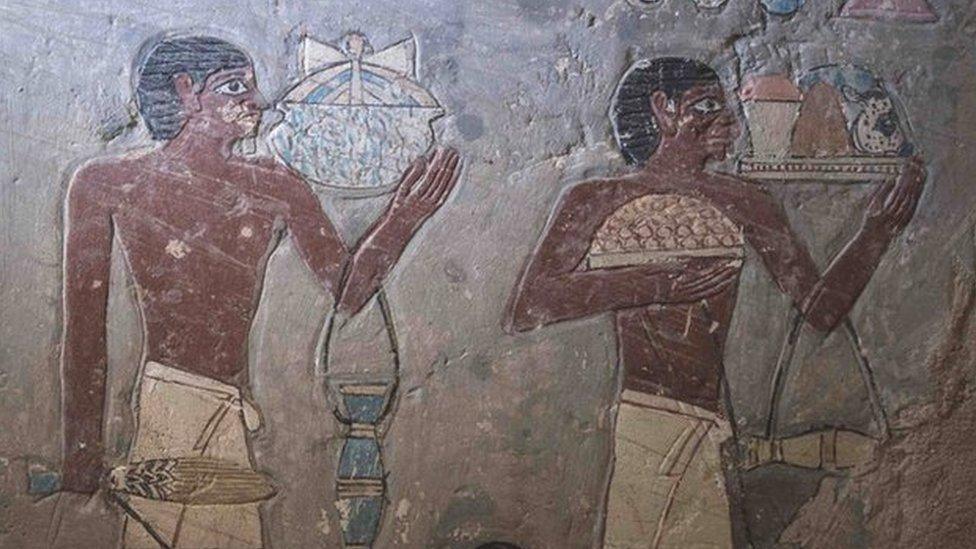Amenhotep I: Ancient Egyptian mummy digitally 'unwrapped'
- Published
- comments
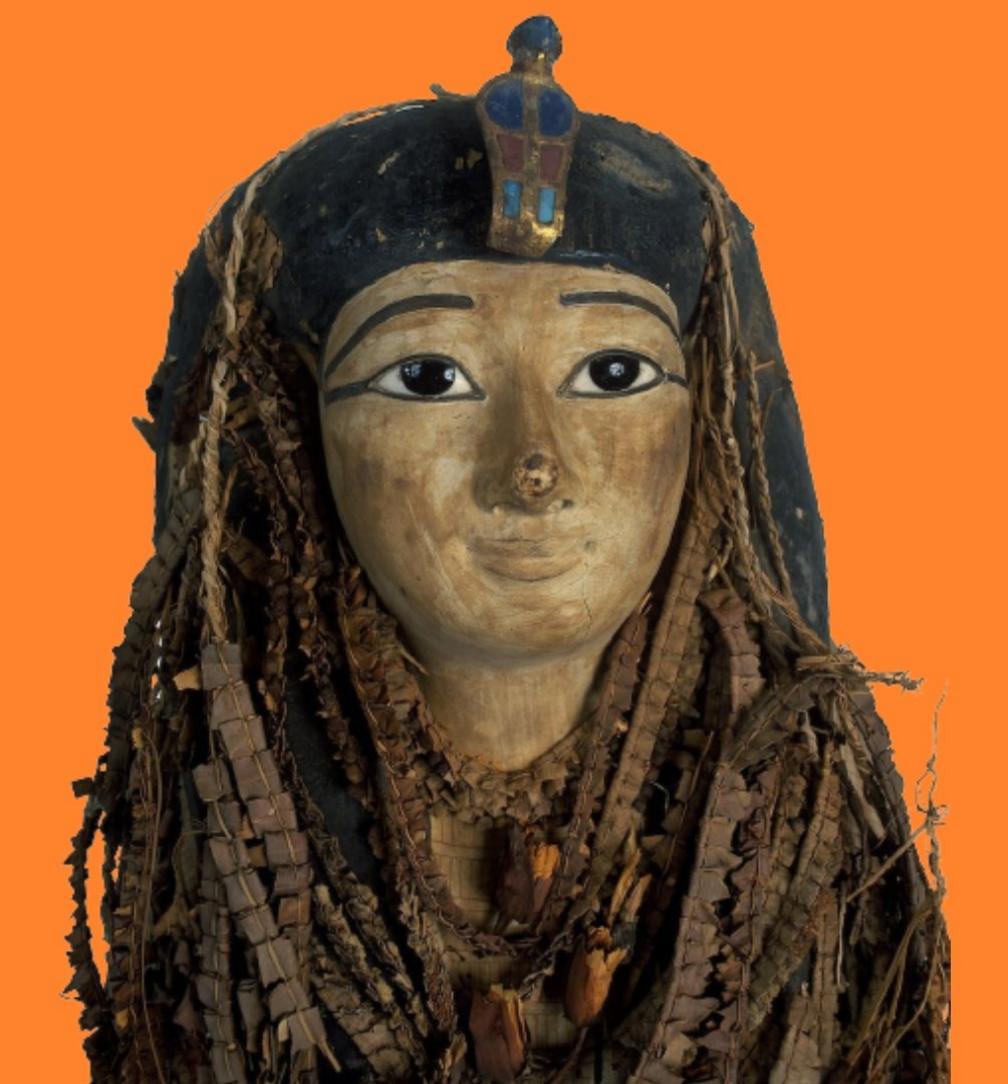
The mummified wrapping of ancient Egyptian Pharaoh Amenhotep I
The body of a perfectly wrapped mummy has been seen for the first time in centuries after being digitally "unwrapped".
Experts have not wanted to uncover the body of Egyptian Pharaoh Amenhotep I in the past because of how beautiful the ancient ruler's wrapping was decorated.
But a new study has been able to look underneath using special computed tomography (CT) scanning technology without damaging the mummy,
Researchers discovered new information about his appearance and the luxury jewellery he was buried with.
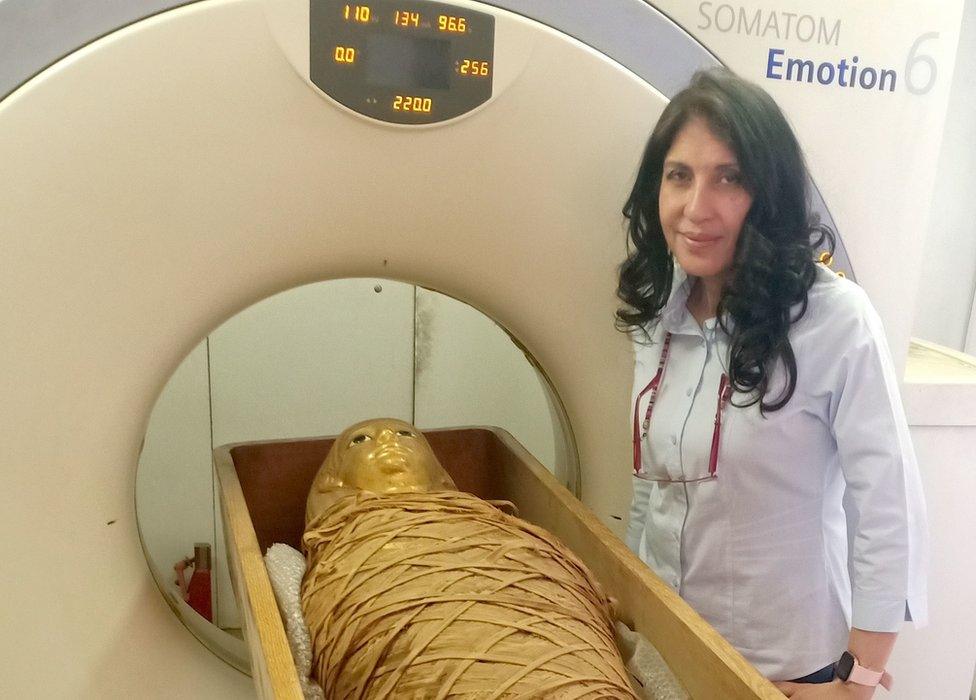
Dr Saleem says the scans of the body did not show any wounds or disfigurement due to disease
Amenhotep I ruled the ancient Kingdom of Egypt from roughly 1525 to 1504 Before Christ (BC) - that's 3,500 years ago.
"By digitally unwrapping of the mummy and 'peeling off' its virtual layers - the facemask, the bandages, and the mummy itself - we could study this well-preserved pharaoh in unprecedented detail," said Dr Sahar Saleem, lead researcher from Cairo University and the Egyptian Mummy Project.

An image of the head of King Amenhotep I created using CT scanning
"We show that Amenhotep I was approximately 35 years old when he died. He was approximately 169cm tall... and had good teeth.
"Within his wrappings, he wore 30 amulets and a unique golden girdle with gold beads," she added.
The Egyptians believed in an afterlife - the idea that they would live on after their death.
As well as their bodies, which were preserved through mummification, Egyptians also believed they would need their belongings in the afterlife.
Rich and important Egyptians were buried in tombs with all their treasure to take with them.
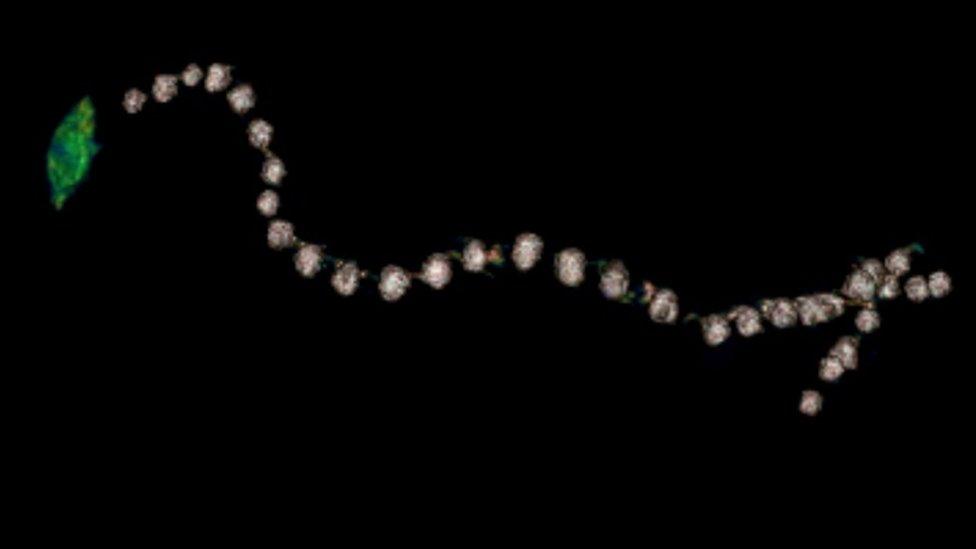
Golden beaded jewellery with a snail amulet hidden beneath Amenhotep I's wrappings
Amenhotep I, the son of Pharaoh Ahmose I, was worshipped as a god after his death.
His mummified body was first discovered in 1881 at an archaeological site in Deir el Bahari in southern Egypt.
"Amenhotep I seems to have physically resembled his father: he had a narrow chin, a small narrow nose, curly hair, and mildly protruding upper teeth," said Dr Saleem.
The study was published in Frontiers in Medicine journal.
Watch as 18 kings and four queens were carefully moved to a new museum in Cairo in a dazzling parade (April 2021 report)
- Published4 April 2021
- Published25 January 2019
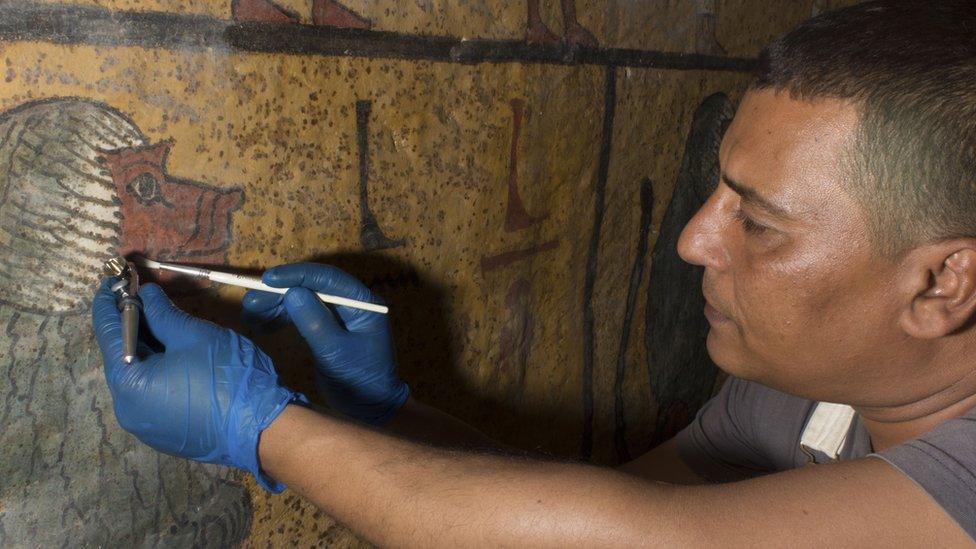
- Published13 November 2018
- Published15 September 2018
